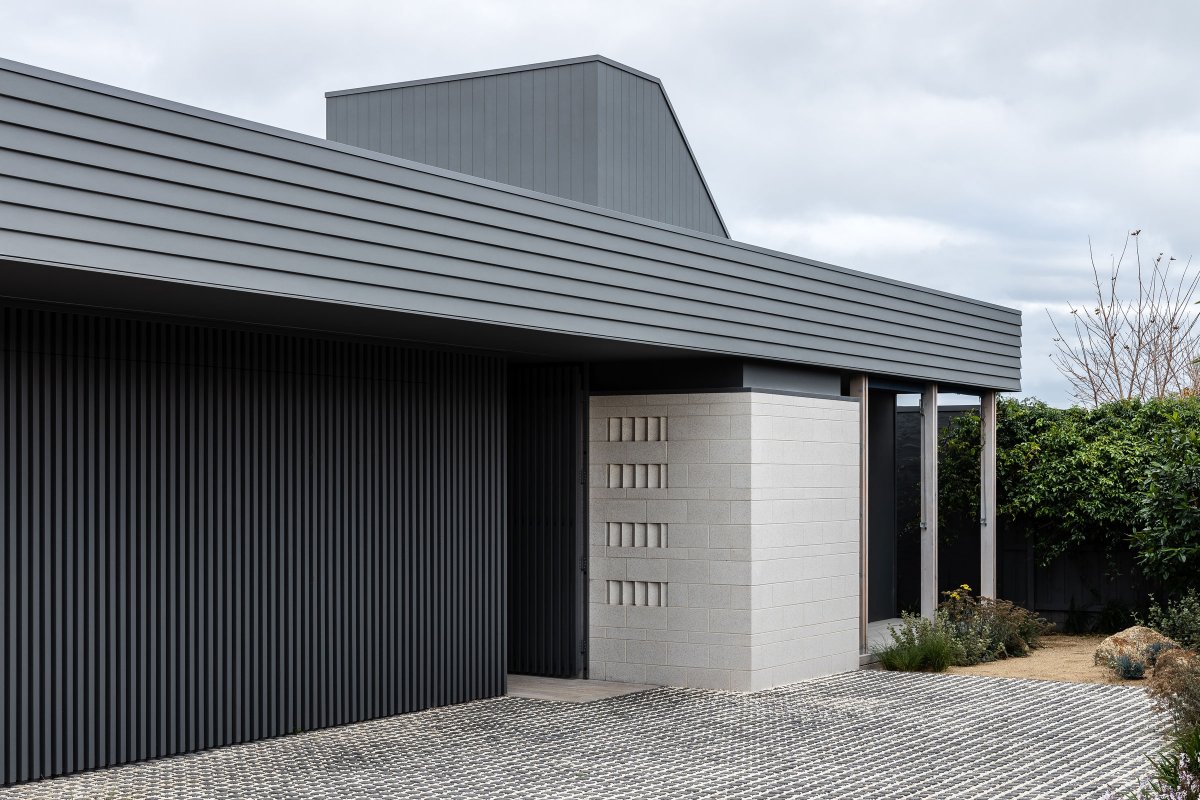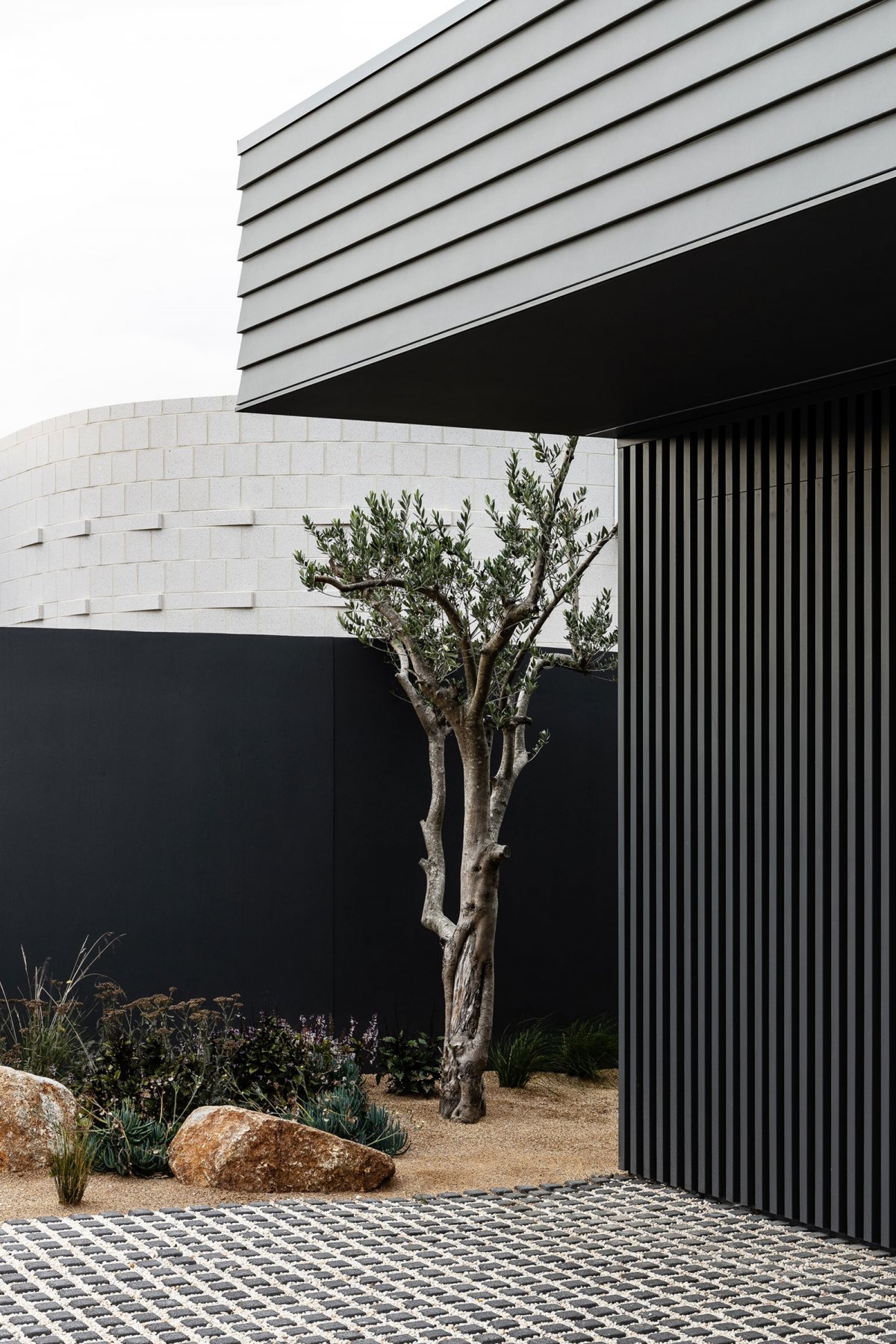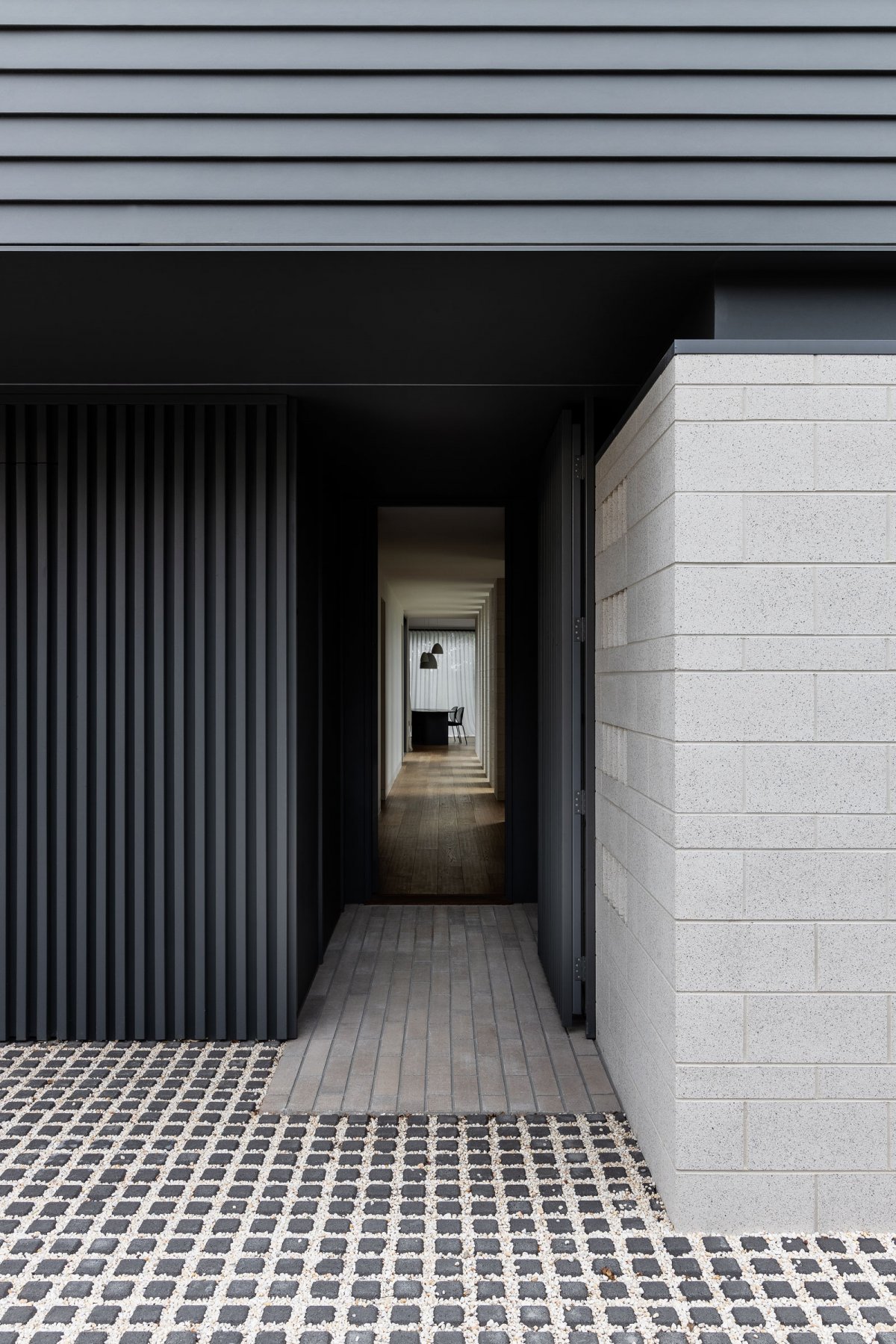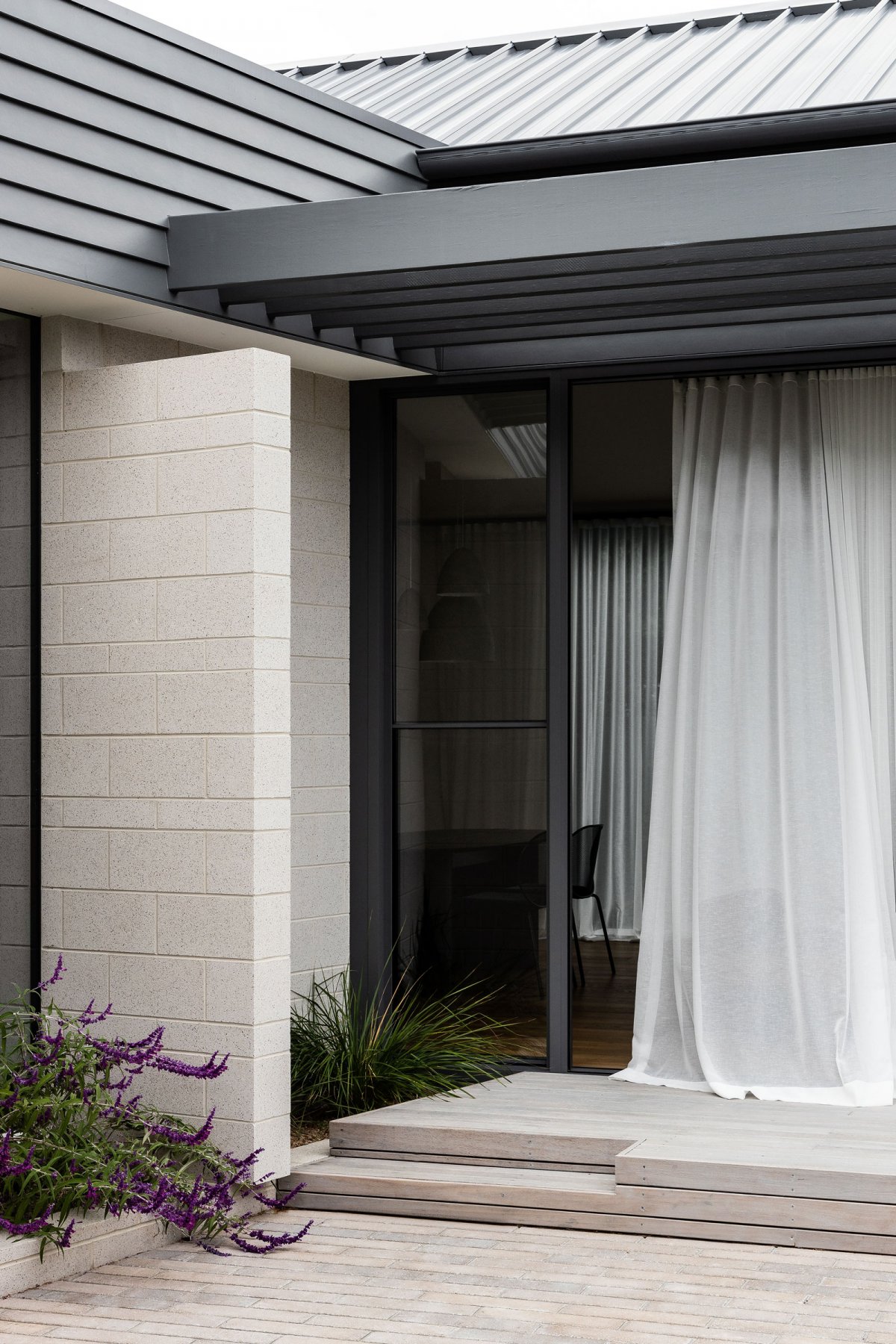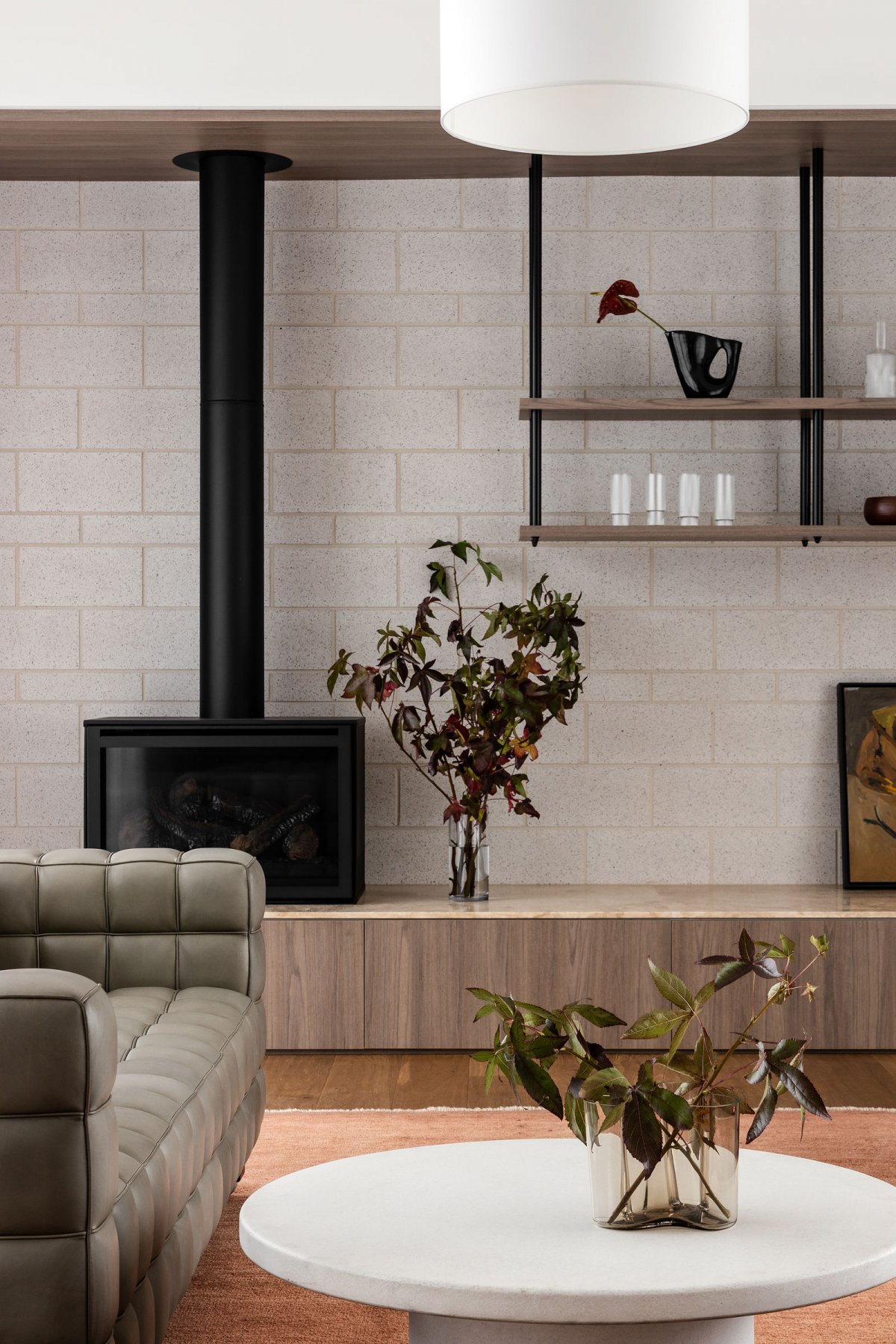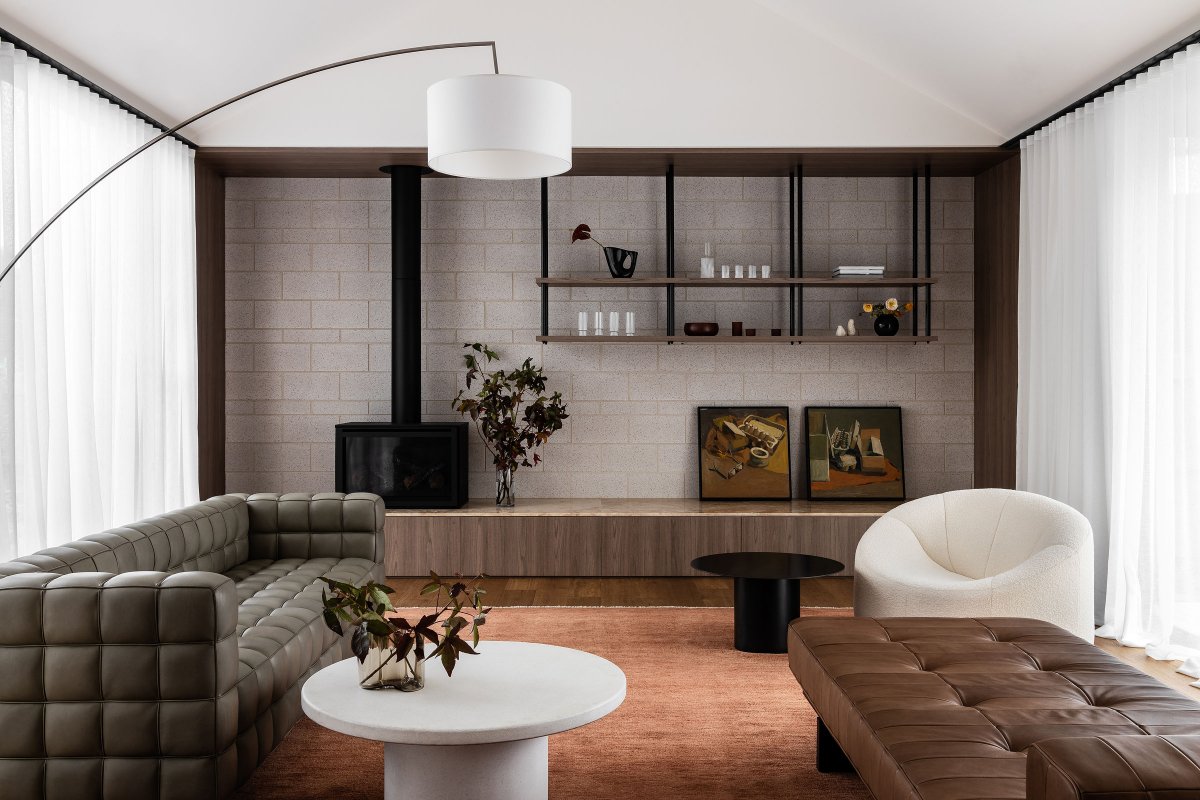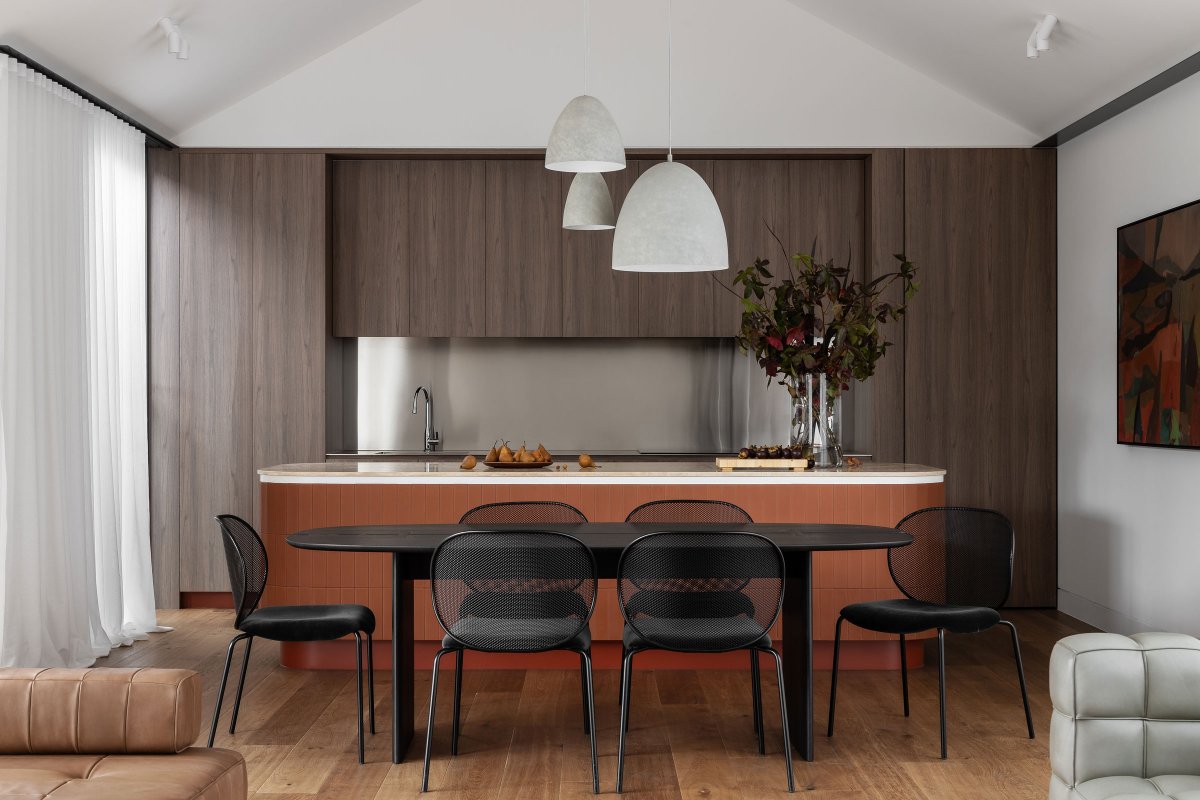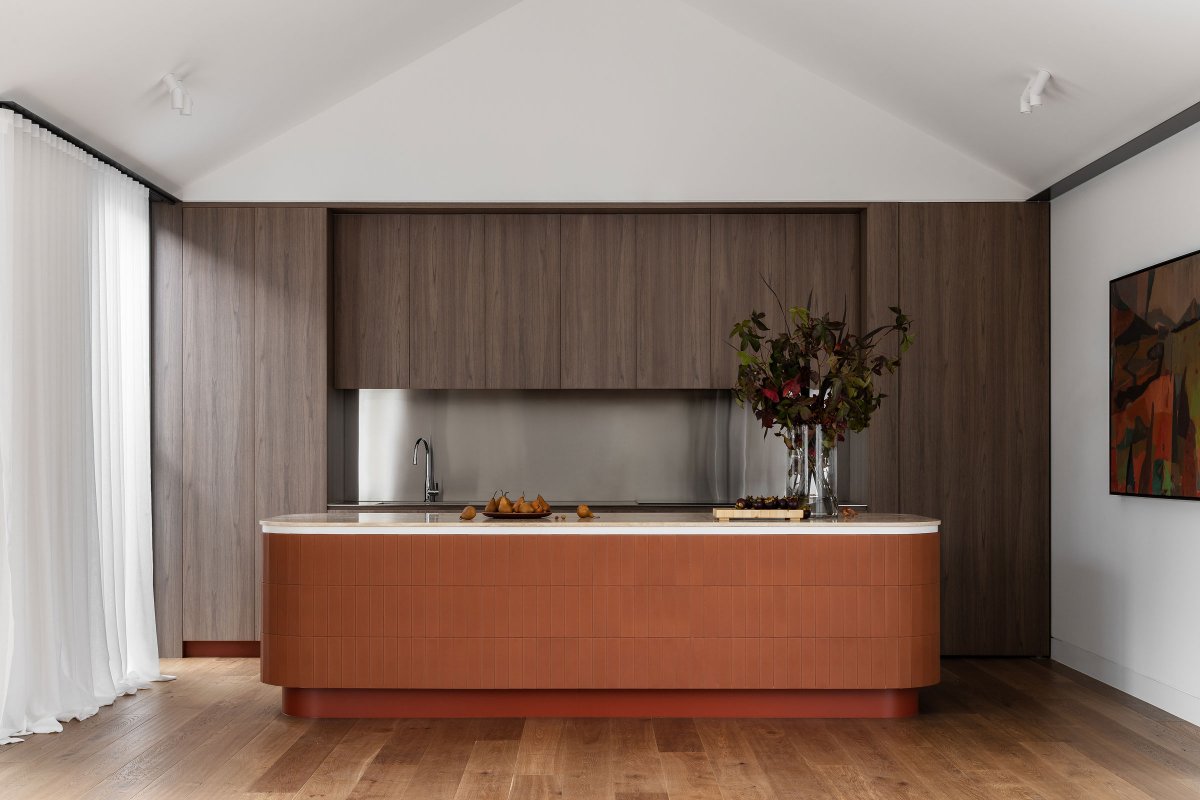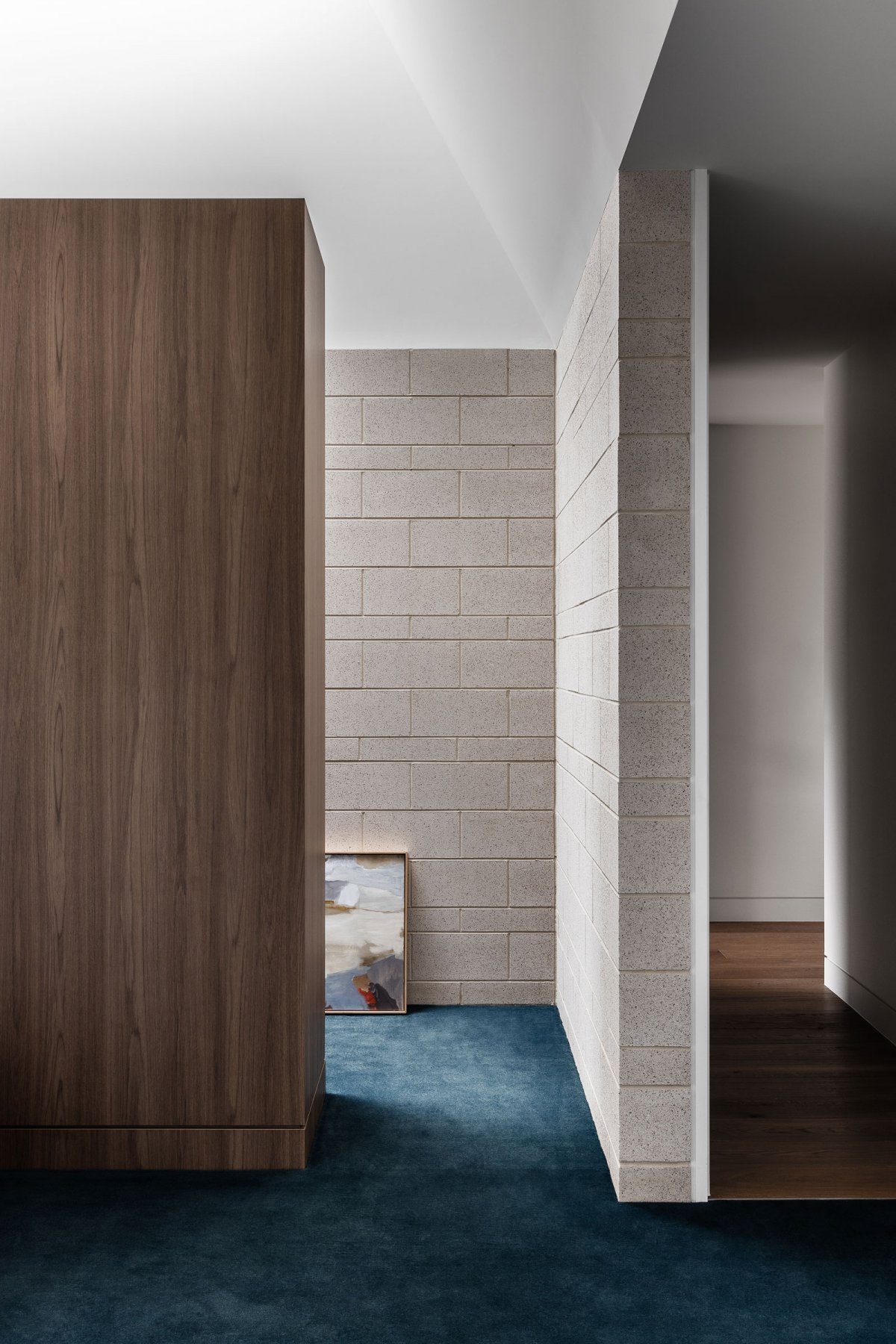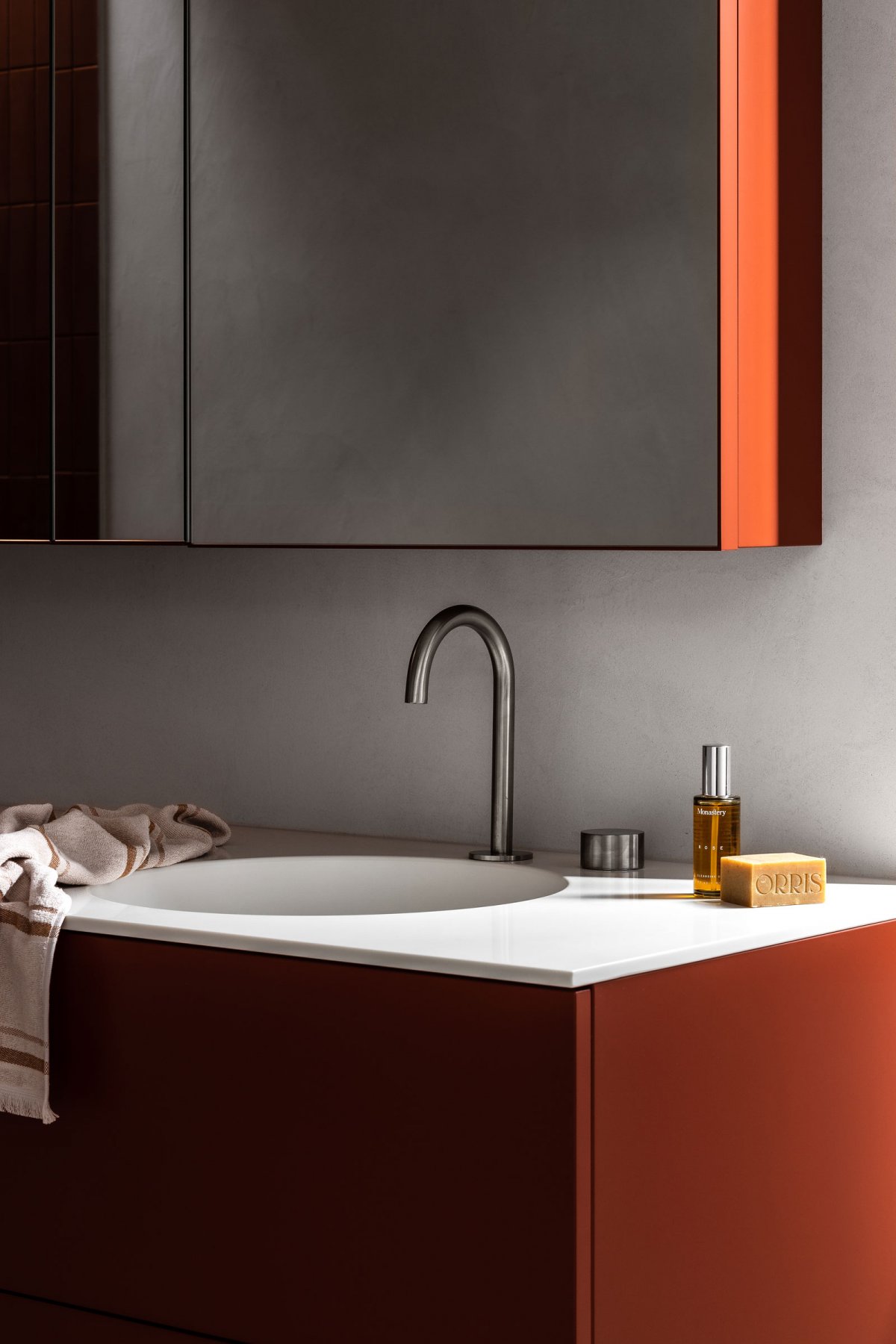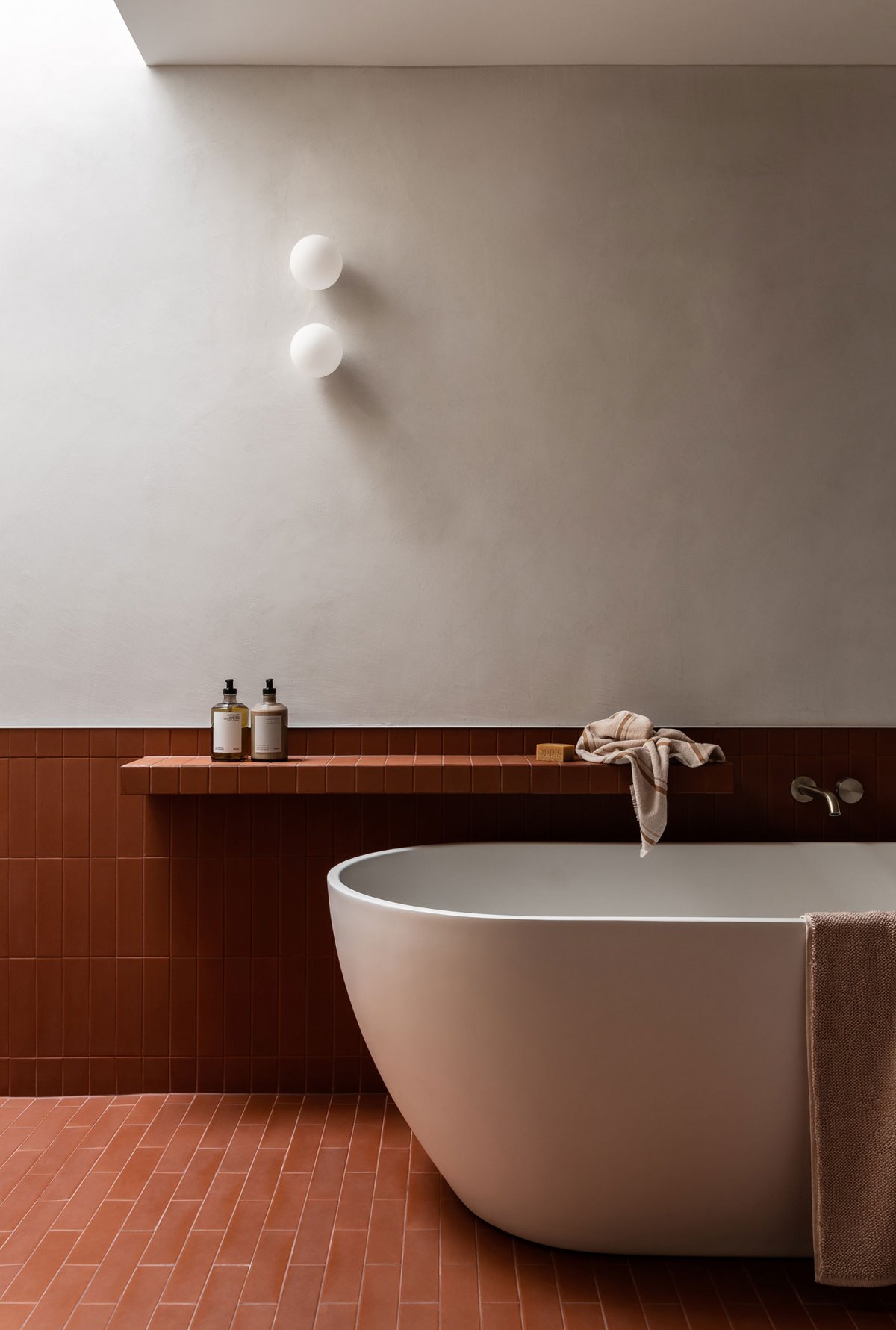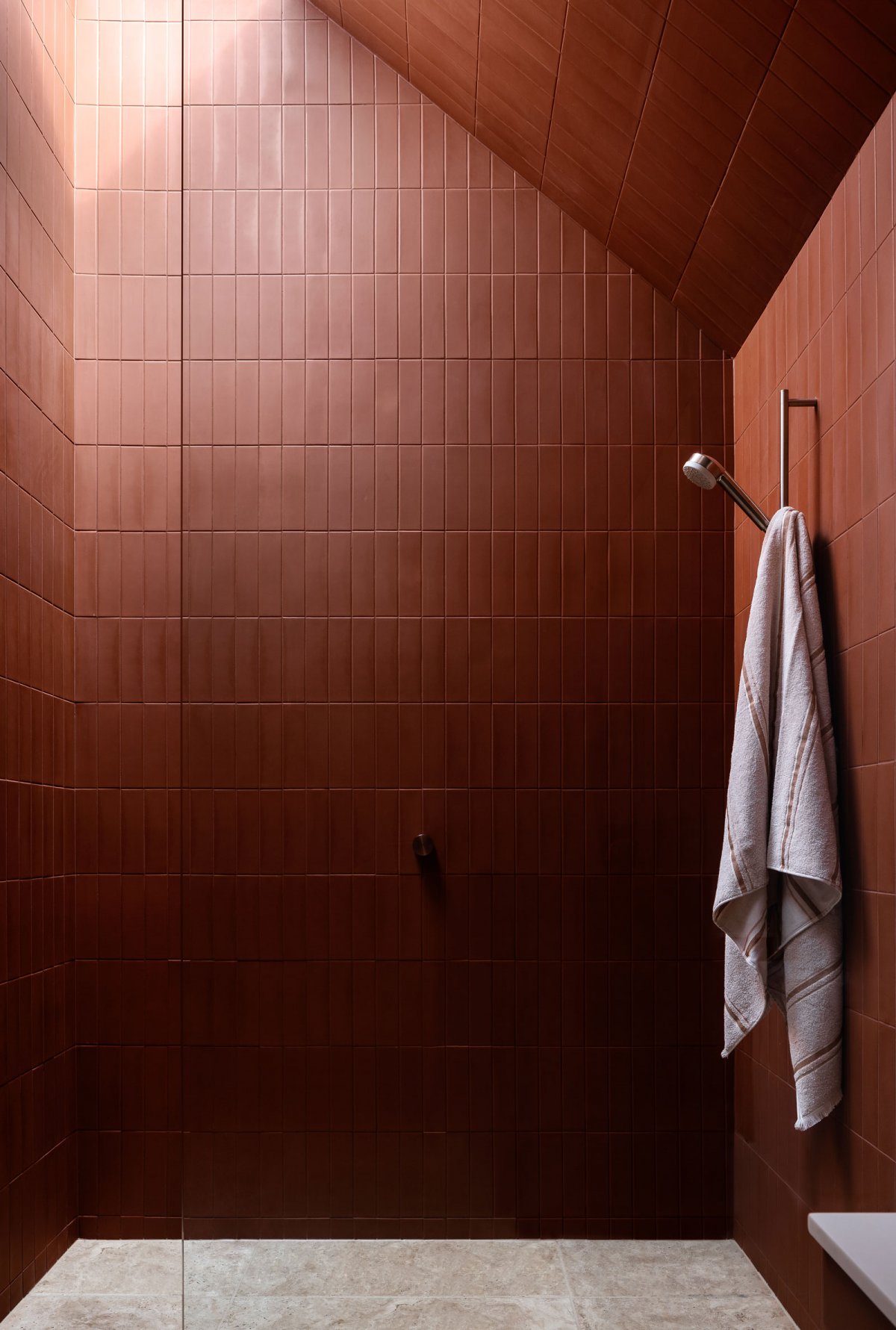
As its own unique offering of robustness amongst an existing coastal milieu, Wren House stands as a considered collection of diverse textures, anchored to site. Wolveridge Architects reimagines the traditional response to place and looks to Japanese influences to encase the family home, creating a place of warmth and enrichment.
While maintaining a consistent vernacular in an area reinforces a sense of community, there is also something to be said for a fresh take on what it means to respond to place. Located within walking distance from nearby Mount Martha beach, Wren House leverages its developer-builder led approach to realise a considered restraint to budget while also reshaping the traditional coastal architectural approach.
Where beachside homes typically tend towards the lightweight and open, by looking to the harsh environmental conditions and the effect of incoming winds and potential erosion, a more weighted sensibility is imbedded into the resulting home. From a masonry base, the traditional timber weatherboard home is abandoned in place of something more steadfast and robust, ensuring a protective and calm shelter is created. With a focus on texture and materiality, Wolveridge Architects creates a resonant home that imbues warmth.
The home is a modest insertion, consistently maintained at one level and contained within its slight form. While budget was a driving force, ensuring a quaintness in consideration of the more traditional and surrounding coastal homes in scale confirms the addition as an extension of that which came before. Taking inspiration from the Yoshio Taniguchi Okura Hotel in Tokyo, the home embodies a surprising and unexpected sensibility for its location. Instead of focusing on lightness of materiality and an engagement of the surrounds, a more introspective approach transporting back to a 1960s-era of saturated internal tones and a layered materials.
Centred around an internal courtyard, the dedicated outdoor space allows for natural ventilation and sunlight to penetrate the overall volume, while also connecting to nature. With flooring poured to be on-grade throughout, the home is anticipated as an ideal place for ageing in place, and the ease of transitions internally and out into the immediate landscape was a key consideration. The courtyard also acts as a protected refuge of sorts, connected externally and yet sheltered from the prevailing winds. In balancing both an economy of scale and creating a unique home, details throughout have been considered to ensure the right material aligns with its function and the overall scheme.
- Architect: Wolveridge Architects
- Interiors: Wolveridge Architects
- Photos: Timothy Kaye
- Words: Bronwyn Marshall

